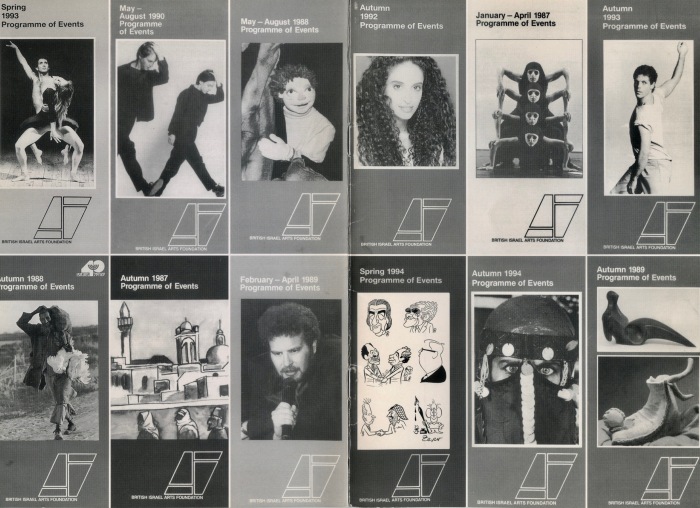
In the summer of 1984 and after years on the road as Northern Director of the British Israel Chamber of Commerce and feeling the need to settle down in one place, I applied for the position as Director of the British Israel Arts Foundation in London.
I first met Jane Moonman, then Director of BIPAC, from the steering group of this new Foundation. She introduced me to Lilian Hochhauser, the music impresario. who interviewed me. After only five minutes she said “You will be perfect for the job”. “Are you sure?” I asked, “You hardly know me” to which she replied “Yes, I’m sure.” I accepted the offer and began my new career.
The Foundation, independent and nonpolitical, was created by a number of luminaries – Arnold Wesker (playwright) who conceived the idea, Lord Weidenfeld (publisher), Bill Freedman (historian) Sir Trevor Chinn ( UJIA), Moshe Raviv (Israel’s UK ambassador) and Eli Rozik (Cultural Attache). Lilian Hochhauser was Chairman – a perfect choice as none could match her experience of promoting world class music events in both countries.
From my Baker Street office I spent several months laying the groundwork, meeting anyone and everyone involved with bilateral art and culture and discussing ways to co-operate. Of prime importance were the links established with the Israel Embassy and the British Council. During this period we presented our first event – a tour by the Haifa Schools Symphony Orchestra to Aberdeen, Glasgow, Edinburgh, Newcastle and finally Liverpool where the press reported ‘They brought a welcome ray of sunshine to a gloomy English summer, lit up by the red and white scarves from a ‘certain’ football team.’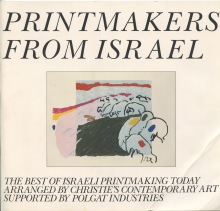
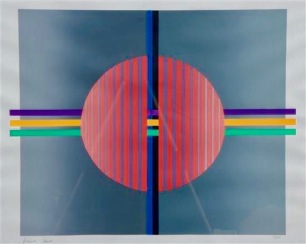
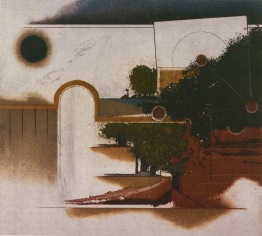
Yanai, Circle of Energy, screenprint Beeri, ‘Midi’, etching
Our official launch took place in November 1985 with the exhibition ‘Printmaking In Israel’ at Christie’s, St James. Fourteen leading Israeli artists including Kadishman, Beeri, Ullman, Hadany, Rothenberg Abramson, Smilansky, Richardson and Boussidan displayed their works. Almost all of them continued to have stellar careers both in Israel and internationally.
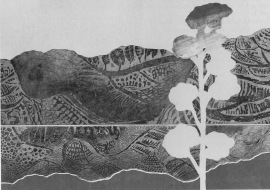 Ullman, Blue Flower, collograph
Ullman, Blue Flower, collograph
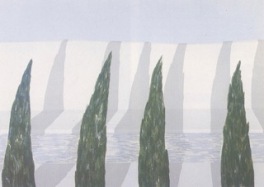 Hadany, Four Trees, screen print
Hadany, Four Trees, screen print
At the Reception, our 250 guests also enjoyed a recital by the Yuval Piano Trio. David Sonin (music critic) wrote “I hope the quality of the BIAF’s programme, launched so elegantly at Christie’s last night, will continue to match its initial offerings.” Praise indeed – David was renowned for his acerbic comments. On reviewing their Queen Elizabeth Hall concert, that same week. he wrote ‘The Yuval Trio is world class. One would have hoped that the audience might have behaved better. A wave of latecomers, coughs, rustling programmes, chatter and the opening of handbags would have unnerved lesser musicians. “I recommend that ladies should check in their bags before the start and under no circumstances should programmes be sold before the end of the concert.” I doubt anyone heeded his advice then or since – shame!
We also launched the first UK exhibition of Israeli architecture at the Royal Institute of British Architects, London. I found it totally fascinating, having once fancied being an architect. It was here I learned how, starting in the 1930’s, more than 4,000 buildings were constructed in International/Bauhaus style in Tel Aviv – more than any other city in the world, and it became known as the ‘White City’. Images of these were displayed, alongside outstanding colonial buildings from the British Mandate period. Other topics included Kibbutz and Solar Energy architecture, development in Beduin villages, the restoration in Jaffa and the reconstruction of the Roman-Byzantine street in Jerusalem’s Old City – The Cardo.
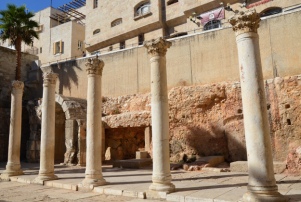
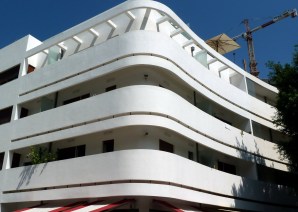
The Cardo, Old City, Jerusalem Bauhaus building, Tel Aviv
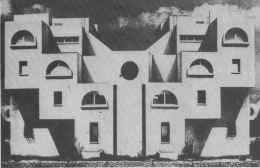
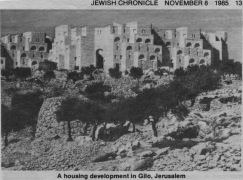
Housing development, LOD
Leading architects, including Moshe Safdie, gave presentations and the exhibition, with lecturers, continued to six university cities. Later in the year we arranged an architectural tour to Israel, including visits to Arab villages, Kibbutzim and Moshavim, archaeological sites, Jerusalem and Tel Aviv.
From the start we published three programmes of events every year, each containing some ten activities. This being long before the introduction of the internet, all our publicity material had to be printed and sent by post to the thousands on our mailing list. I recall one of my colleagues adamantly refusing to take our shopping trolley of leaflets to the post office – she felt it was far too undignified an activity for her to contemplate. “I mean, what would happen if one of my friends were to see me?”
Many of our events still remain in my mind, usually because of some moving or unexpected reaction from our diverse audiences, one example being in 1986 when the Kibbutz Dance Company visited the UK. They performed in York where a local newspaper reported “Where else can you find a modern dance company composed entirely of farmworkers and mechanics from agricultural settlements – this company is unique and of an impressively high standard”. I wonder what they expected?
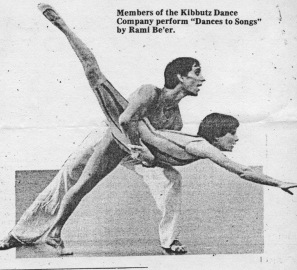
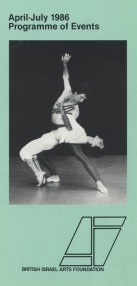
In London I arranged for the company to give a ‘free’ performance of Peter and the Wolf at The Place Theatre, for underprivileged schoolchildren of whom 50 were blind. I remember someone asking me what was the point of inviting them to ‘see’ the show. I replied “If you tell a blind person not to go where they cannot see, they would never go anywhere.” All the children were spellbound, on their feet, cheering and clapping. At the finish, the blind group were invited on stage to meet the dancers, touching and stroking their faces and ‘animal’ costumes ‘feeling’ how they looked. It was incredibly moving to see how art can bring joy to everyone. That day will be remembered forever not just by me but also by the children and the dancers.
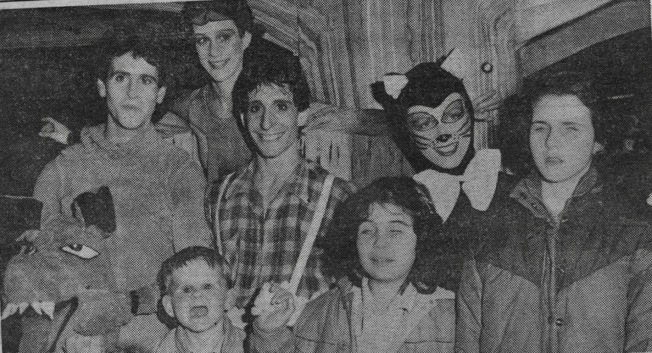
Kibbutz Dance Company perform Peter & The Wolf for youngsters, The Place 1986
1987 was the Ben Gurion Centenary Year, with a galaxy of musicians arriving – the Beersheva Sinfonietta, Israel Chamber Orchestra and Jerusalem String Trio. Young Israeli soloists performed with the London Philharmonia celebrating Israel’s Independence Day with popular singer Yehudit Ravitz as part of the programme at the South Bank. The Israel Philharmonic, conductor Zubin Mehta and violinist Shlomo Mintz were at the Barbican and the Royal Albert Hall – a year of outstanding performances.
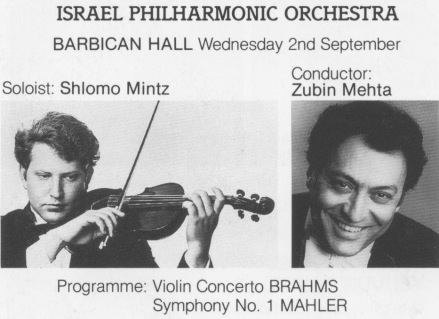
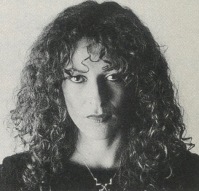
Yehudit Ravitz
Israel Week in Barnet included leading Cameri Theatre actor Ilan Dar with his one man play ‘Like a Bullet in the Head’, Israeli films and a photographic exhibition ‘The Living Desert’. Batsheva Dance Company were at Sadlers Wells, archaeologists gave talks on the Negev, Megiddo, The Ten Lost Tribes and The Dead Sea Scrolls and renowned writers Aharon Appelfeld and A.B.Yehoshua presented their latest books.
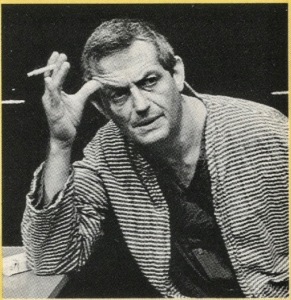
Ilan Dar
1988 began with a flurry of events. The Kiryat Ono Youth band received rave reviews at the Guildhall School of Music and the Thelma Yellin School orchestra toured to eight cities and Israeli songstress Ofra Haza sang Yemenite songs at the South Bank. As for theatre – The Cameri played a week at the Bloomsbury Theatre, charismatic Oded Teomi was at the New End Theatre, Tmuna Dance Company at the ICA and so on..…
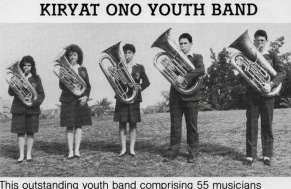
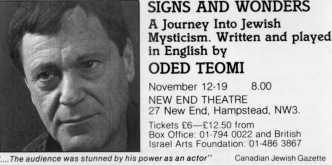
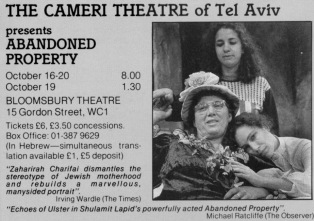
However, as busy as this year started, nothing prepared us for what followed later in November as 1988 was the 40th anniversary of the State of Israel when we and several other organisations were involved in a celebratory week, The Heart of Israel, at Alexandra Palace. I have never worked so hard in my life. Visiting groups included Anachnu Kan, a vibrant Russian singing ensemble and Habrera Hativit – Israeli fusion music – with Shlomo Bar. There were also illustrated talks on a wide range of subjects including the discovery of a boat from the time of Jesus in the Sea of Galilee and much more.
It was here that I brought to London for the first time an exhibition of photography by Israel’s leading photojournalist David Rubinger – the start of a friendship that culminated in my writing his biography in 2008.
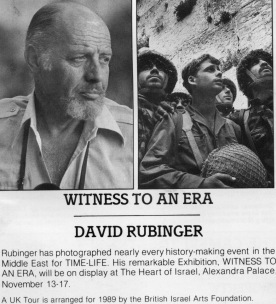
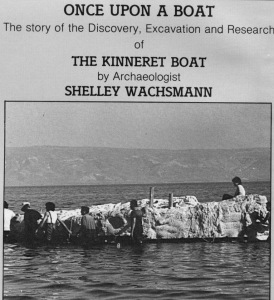
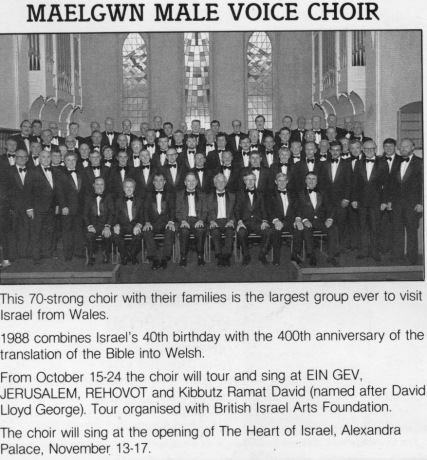
Another memorable feature during this week was the surprise performance by the 70 strong Welsh Maelgwyn Male Voice Choir. A month earlier, with our help, they had visited Israel and, to say thank you, they came to London especially to sing for us. They finished with a rendition of ‘Hevenu Shalom Aleichem’ – the song I had taught them whilst on the bus trip from Jerusalem to their concert in Rehovot. It brought the house down – both there and London. ( you can read more about their Israel visit in my book ‘Unexpected Israel’)
However, I have still to tell you about what also happened that year which had the greatest impact on my life. I had been invited to visit Rosh Ha’ayin to meet the 40 girls of the Yemenite Mandolin Orchestra with a view to bringing them to the UK. As arranged, I waited at the Hilton, Tel Aviv for their driver.
He was over an hour late and I was just about to give up when he arrived and took me to Rosh Ha’ayin. I met the girls, fell in love with them and arranged an extensive seven city UK tour. They also appeared on TV with Sir Harry Secombe.
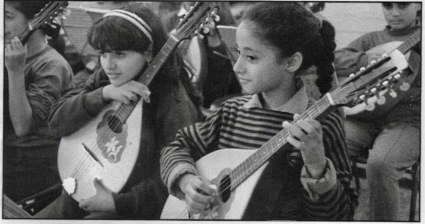
In each place hospitality was with local families. I arranged for four of them to stay with us in London from Friday to Sunday – the day of their Queen Elizabeth Hall concert. Two of the girls,Tali and Edi, plus the conductor and his assistant were on my list.
That Friday evening my son Charles, joined us for the Shabbat meal. Two months later he went to Israel to visit Tali. They married. The result – three wonderful grandchildren, the eldest of whom, Danielle, has given me three gorgeous great granddaughters, and a fourth child is on the way. Can you imagine a better perk that one could wish for in any job?
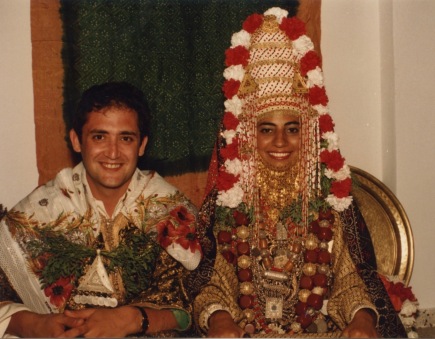
For me the most rewarding aspect of my work with the Foundation, which continued for ten more years, was the lifelong friendships I made with so many talented artistes, more of which I will tell you about in future instalments ….. watch this space…….

Another heart warming gem with such a lovely famiily connection.
LikeLike
thank you so much!
LikeLike
A wonderful list of some of your achievements in bringing these terrific events together Ruth. Loved the photographs which all made me nostalgic!!! Another great essay – thank you.
LikeLike
Loved these Ruth. Great picture of your son and his bride!!!!
Hope all is well.
Love
Shirley
LikeLike
Thank you for sharing your wonderful experiences. Hope to see you back in Yerushalayim soon. Be well.
LikeLike